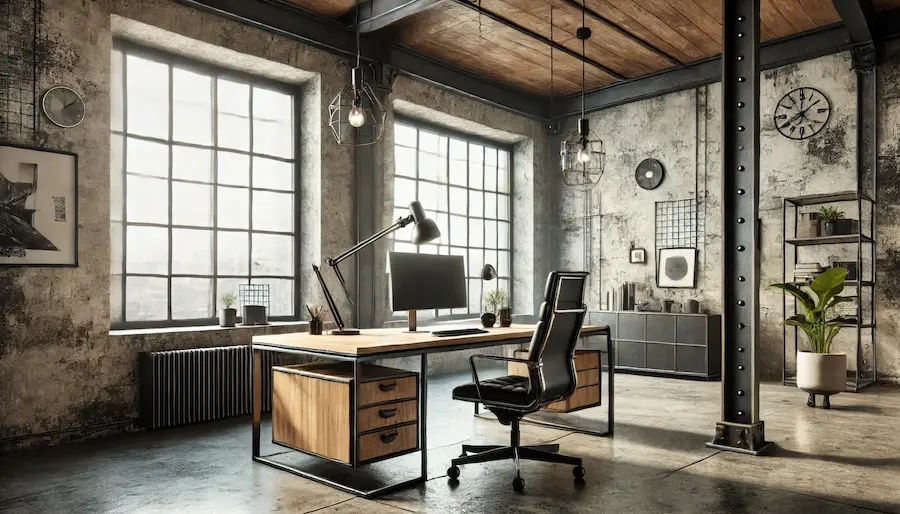An industrial office room is a workspace that embraces the raw, unpolished elements of industrial architecture. With its rugged aesthetic, it combines functionality, spaciousness, and creativity. The style emphasizes exposed structural elements, neutral tones, and a blend of wood and metal to create a unique and inspiring environment.
History and Origins of Industrial Design
Industrial design has its roots in the late 19th and early 20th centuries, heavily influenced by the Industrial Revolution. Factories and warehouses built during this era prioritized function, showcasing exposed brick walls, ductwork, and open layouts. By the late 20th century, these industrial spaces were repurposed for residential and commercial use, leading to the rise of industrial chic as a popular design style.
Key Features of an Industrial Office Room
- Exposed Elements: Visible ductwork, beams, and brick walls that highlight the building’s industrial roots.
- Open Floor Plans: Spacious layouts that foster collaboration and adaptability.
- Neutral Color Schemes: Predominantly gray, black, and earthy tones to maintain a cohesive aesthetic.
- Metal and Wood Accents: A combination of steel and reclaimed wood for durability and style.
- Industrial Lighting: Fixtures such as Edison bulbs, metal pendants, and factory-style lamps.
- Textured Finishes: Use of concrete, steel, and unfinished wood to add depth and character.
Applications of Industrial Design in Office Spaces
The industrial style suits modern office spaces by promoting creativity and collaboration. Open layouts encourage teamwork, while the durable materials and timeless design offer longevity. The style’s adaptability and eco-friendly potential—such as reclaimed materials and energy-efficient lighting—align well with contemporary corporate values.
Considerations When Designing an Industrial Office Room
- Safety: Ensure that exposed elements meet building codes and safety standards.
- Acoustics: Manage noise in open layouts with sound-absorbing materials and partitions.
- Comfort: Balance the rugged aesthetic with comfortable seating and ergonomic designs.
- Lighting: Maximize natural light and choose complementary artificial lighting for productivity.
- Branding: Incorporate personalized elements, such as company logos or colors, to reflect identity.
Conclusion
Industrial office rooms offer a blend of historical charm and modern practicality. By celebrating raw architectural elements and fostering an open, dynamic environment, this design style creates a workspace that is both functional and visually compelling. Perfect for contemporary businesses, industrial offices embody creativity, collaboration, and timeless appeal.
